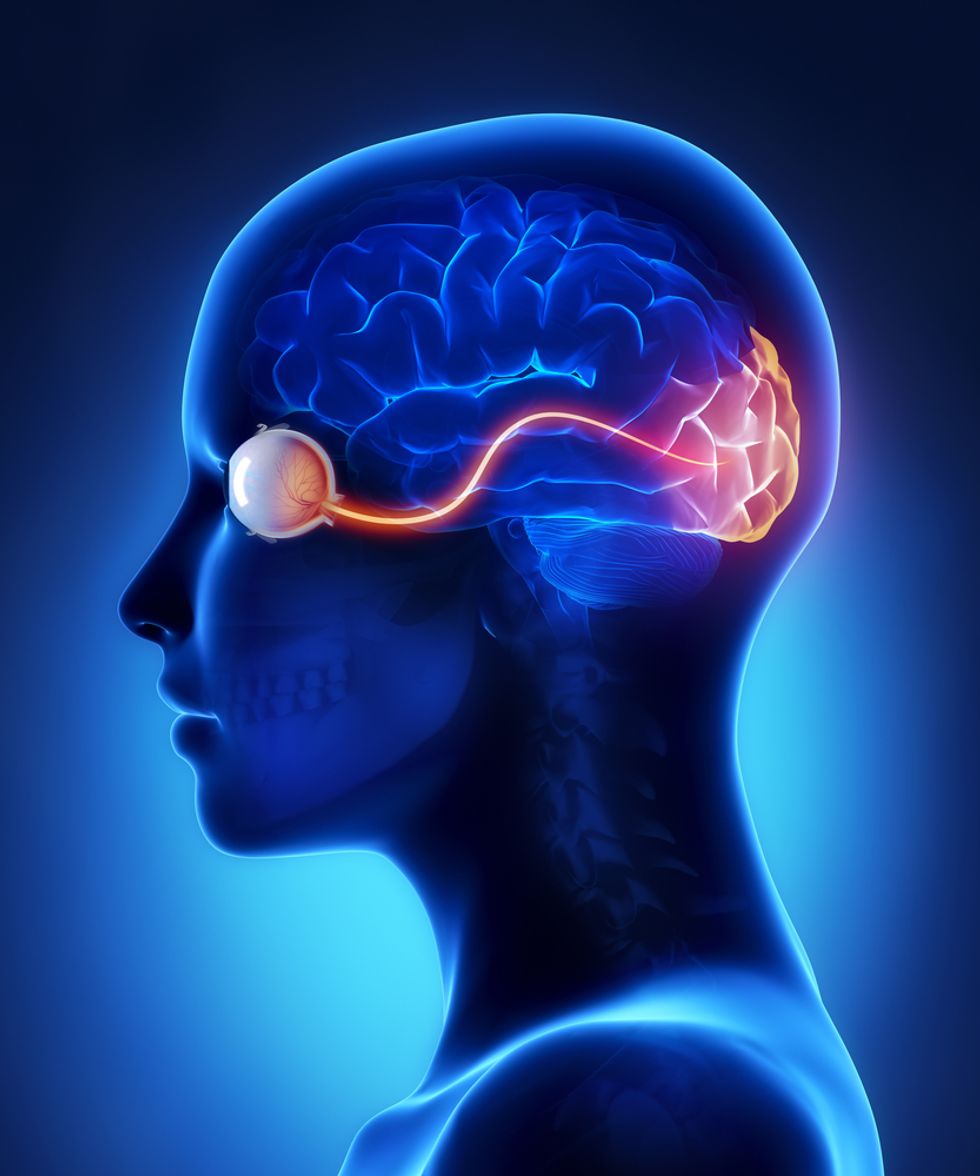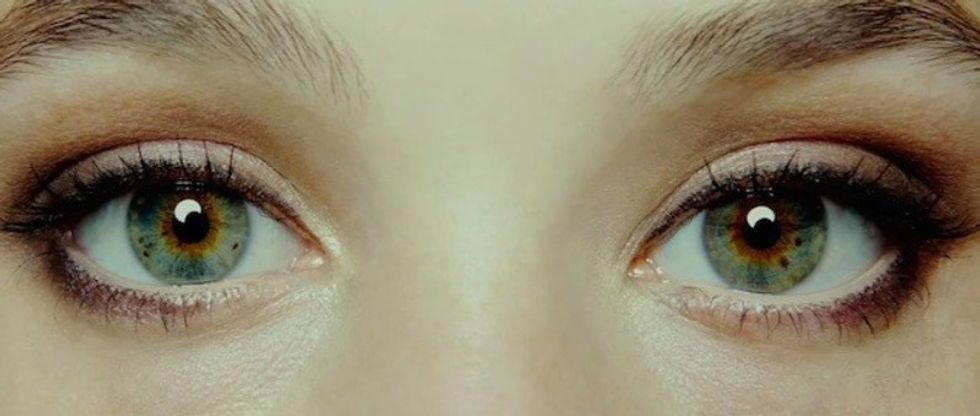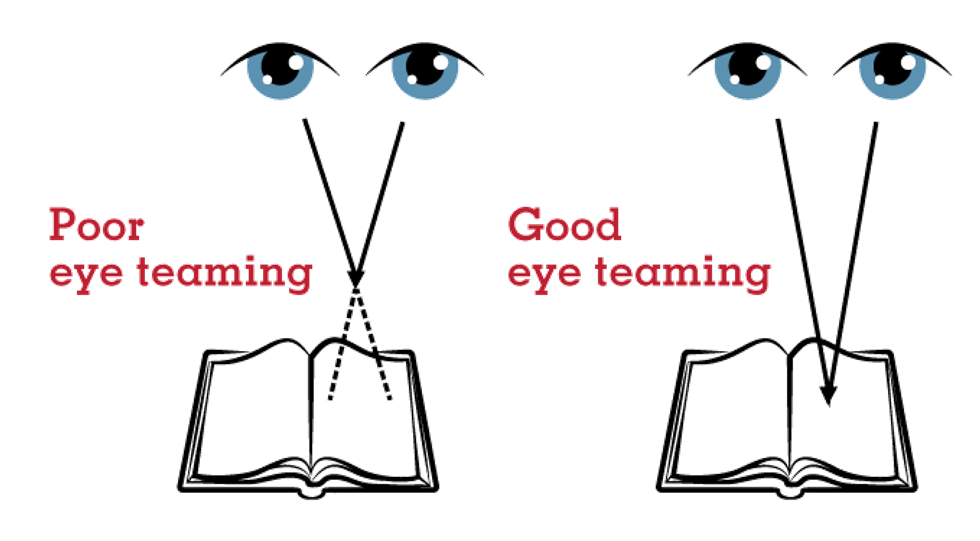I spy with my little eye....a lot of very interesting facts about eyes. Yes, I went there. I'm sorry, I know it's exceedingly cheesy. In all seriousness, all the people I know were born with two eyes. Some have eyes that don't work at all, others have two eyes that work perfectly, some have eyes that aren't good at reading, others that aren't good at seeing distance, and some have eyes that don't work well together. Eyes are extremely fascinating, and that's why they deserve an entire article to unpack a fraction of the cool things about them.
1. The most active muscles in your body are the muscles that control the eye.
If you think about this, it makes sense. The eye muscles are the most used because, even when you aren't moving, your eye muscles are constantly having to readjust to take in new information about your surroundings.
2. Newborn babies don't start producing tears for at least a month.
The tear ducts of newborn babies aren't fully developed, so they are unable to produce tears. Sometimes their tear ducts are even clogged with amniotic fluid. Babies start producing tears sometime between about four weeks and 13 weeks. Their eyes are only able to create enough tears to keep the eye wet and healthy.
3. Vision is so widely used, that 30 percent of the cortex is used for visual processing.
Millions of neurons are used for visual processing. This is equivalent to about 30 percent of the cortex. There is a whole lobe of the brain dedicated to visual processing--this is the occipital lobe. While vision uses such a large portion of the brain, human vision is far from perfect.
4. With more than two million working parts, the eye is the second most complex organ in the body.
The eye is made up of over two million parts, making it the second most complex organ in the body--of course, right behind the brain. The brain is where all the images our eyes take in are deduced and made into something meaningful.
5. Retina scans are being used more frequently, because the iris has unique characteristics compared to fingerprints.
The iris has 256 unique characteristics, and fingerprints only have 40 unique characteristics.
6. Humans can see the light of a single candle from 14 miles away. 
A single flame can be seen from 14 miles when the conditions are right. Among these conditions, the two most important are the weather and brightness.
7. All blue-eyed people have a common ancestor. 
The first blue-eyed person is estimated to have lived around 6,000 to 10,000 years ago. This means that all people with blue eyes all have a common ancestor as blue eyes are a recessive trait.
8. Your peripheral vision, while very helpful, is not very clear.
A normal visual field is about 170 degrees. The center 70 degrees is the center of gaze. This is where you see the most clearly. In the other 100 degrees, your vision is not resolute and clear. Our shape and color perception are also not great. Peripheral vision does help to bring your center of gaze to other places that you find movement or other odd things.
9. Little harmless and microscopic creatures live in our eyelashes and eyebrows.
I'm sorry to all the germaphobes that now live in fear of these tiny creatures. I assure you they are harmless. There are actually two different creatures that live on our eyelashes and brows, and it seems that all humans have them. You may have a couple hundred or a couple thousand living on them.
10. Reading in dim light doesn't actually harm your eyes, it just tires them. 
If you were anything like me in elementary school, then you used to "sneak read," as I call it. This is when your parents tell you to go to sleep, but you read a book instead. And when they walk in, you pretend to be asleep. My dad used to always warn me about how bad it is for your eyes when you read in the dark or in dim lighting. Well, here it is Dad, my proof!
11. Sometimes your eyes don't work well together.
This is called Convergence Insufficiency. Convergence is the ability of your eyes to move inward to create one image using both eyes. People who suffer from the disorder convergence insufficiency have trouble keeping their eyes aligned like the picture above on the right. It is marked by headaches, double vision, and eye strain. This can make close work hard to do. With increased scientific research into this area, it has been estimated that 2.5 to 13 percent of U.S. adults and kids suffer from this disorder.

































